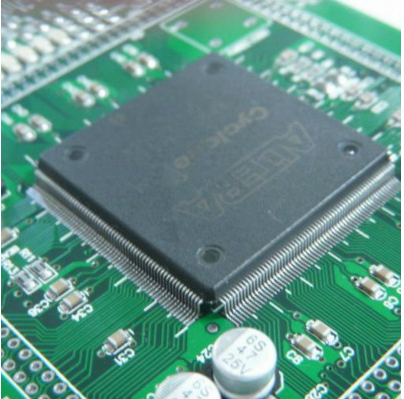1 Constant temperature electric soldering iron SMT components are sensitive to temperature, and the temperature should not exceed 390 degree Celsius during repair. When using a constant temperature electric soldering iron for soldering, the power should be below 20W. The tip of the soldering iron tip is slightly smaller than the PCBA soldering surface. for
1. Constant temperature electric soldering iron
SMT components are sensitive to temperature, and the temperature cannot exceed 390°C during repair. When using a constant temperature electric soldering iron for soldering, the power should be below 20W. The tip of the soldering iron tip is slightly smaller than the soldering surface. In order to prevent the components from being damaged by the induced voltage, the metal shell of the soldering iron should be grounded reliably.
2. Electric tweezers
Electric heating tweezers are a kind of advanced thing specially used for desoldering smt chip components, which is equivalent to two electric soldering irons assembled together. After the power is turned on, pinch the two solder ends of the patch component with the electric heating tweezers, and the component can be easily removed.

3. Heating head
The pins of smt components are different from THT components. After matching the corresponding heating head on the electric soldering iron, it can be used to desolder smt components.
4. Hot air workbench
The hot air table is a semi-automatic equipment that uses hot air as a heating source. Its hot air cylinder is equipped with an electric heating wire, and the hose is connected to the hot air cylinder and the blowing motor built in the hot air workbench. After the switch is turned on, the electric heating wire is heated, and the air is compressed by the blower motor and blown out from the front end of the hot air cylinder through the hose. After the heating wire reaches a satisfactory temperature, the smt chip processing components can be welded and desoldered with hot air.
The specific process and common tools of smt patch processing are introduced!
Tweezers: Use stainless steel and sharp tweezers instead of other magnetic tweezers, because the magnetic tweezers will make the components stick to the upper and lower tweezers during the welding process.
Tweezers: Use stainless steel and sharp tweezers instead of other magnetic tweezers, because the magnetic tweezers will make the components stick to the tweezers during the welding process.
Electric soldering iron: Choose an electric soldering iron with a conical long-life soldering iron tip, with a radius of less than 1mm, and prepare two soldering irons, which are convenient to use when disassembling components.
Hot air gun: When disassembling two-terminal or three-terminal components, an electric soldering iron can be used. However, a hot air gun must be used when disassembling multi-lead components. The hot air gun can improve the reusability of the disassembled components and avoid damage to the pads. For frequent work of disassembling components, a hot air gun with good performance is required.
Suction tape: When the IC lead wire is short-circuited, it is a very good choice to use a suction tape. At this time, a solder suction device cannot be used.
Magnifying glass: Use a magnifying glass with a lamp tube with a base instead of a hand-held magnifying glass. Because it is necessary to use both hands under a magnifying glass when welding, the lamp can be lit to make the field of vision clear and increase the visibility of welding.
1. Component patch data
Simply put, the component placement data is to specify the position, angle, model, etc. of the components to be placed on the PCB. The patch data includes component model, tag number, X coordinate, Y coordinate, placement angle, etc. The origin of the coordinate is generally taken at the lower left corner of the PCB.
2. Benchmark data
Including reference point, coordinates, color, brightness, search area, etc. Before the placement cycle starts, the night vision camera on the placement head will first search for benchmarks. After the reference is found, the camera reads its coordinate position and sends it to the placement system microprocessor for analysis. If there is an error, the computer sends instructions and the placement system controls the movement of the execution component, so that the PCB can be accurately positioned. There should be at least two reference points to ensure accurate positioning of the PCB.
3. Component database
There are PCB component size, pin number, pin spacing and corresponding nozzle type in the library.
4. Feeder arrangement data
The feeder arrangement data specifies the feeder selected for each component and the placement position on the placement machine's feeding platform.
5. PCB data
PCB data includes setting the size, thickness, and board data of the PCB.